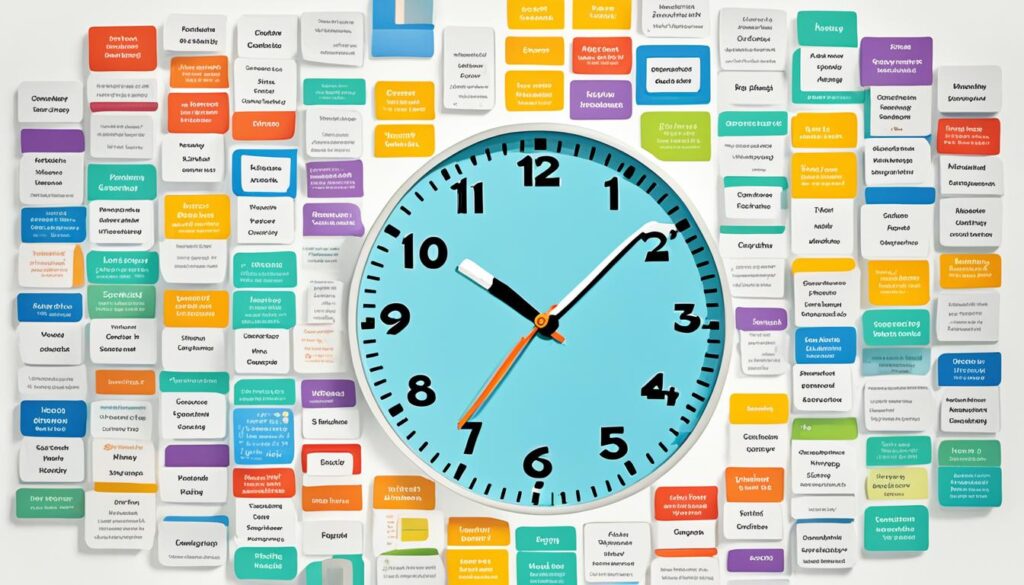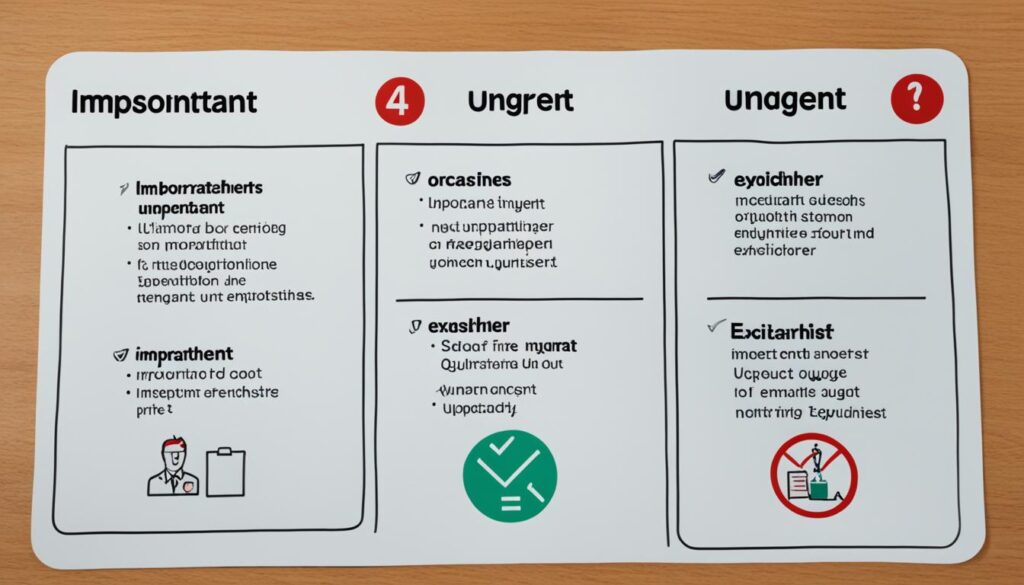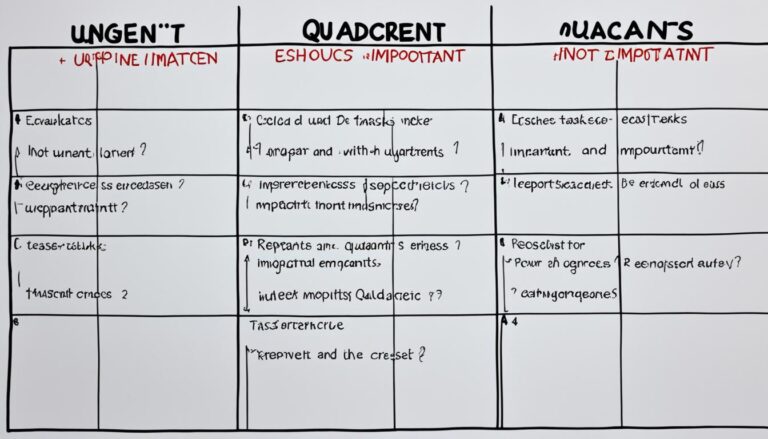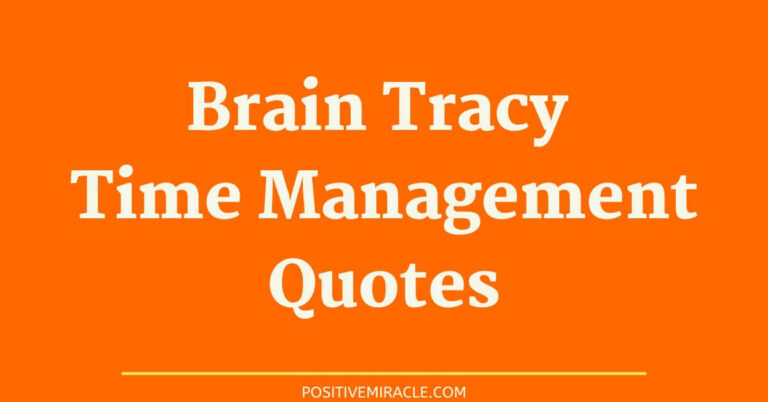Master Life with On Time Management Tips

“Time is what we want most, but what we use worst.” – William Penn
Time management is a skill that can positively transform your life. It allows you to make the most of your precious hours, ensuring that you accomplish tasks efficiently and effectively. By mastering the art of time management, you can achieve a better work-life balance, reduce stress, and enhance your productivity.
According to a report by Starling Bank, microbusinesses spend 15 hours per week on administrative work, while solopreneurs spend 31% of their time on financial housekeeping. These staggering statistics demonstrate the need for effective time management skills in our professional lives.
To improve your time management skills, it’s essential to understand how you’re currently spending your time. Tools like RescueTime can assist you in tracking your activities and identifying areas where time is being wasted.
Creating a daily schedule with realistic timelines and sticking to it is another crucial aspect of effective time management. By setting clear goals and priorities, you can ensure you invest your time in tasks that align with your long-term objectives.
Prioritization is key in managing your time effectively. The Eisenhower Matrix can help you identify which tasks are important and urgent, allowing you to prioritize accordingly. By tackling the most critical tasks first, you can make substantial progress towards your goals.
Procrastination is a common time thief. The “Eat That Frog” method, coined by Brian Tracy, encourages you to tackle the most challenging task first thing in the morning. By facing the most difficult task head-on, you’ll build momentum and avoid getting caught up in less important activities.
Time management tools can also play a significant role in boosting your productivity. Slack, Dropbox, and Google Calendar are just a few examples of tools that can help you streamline your work and stay organized.
By implementing these on-time management tips into your daily routine, you can take charge of your time, achieve more, and live a more balanced and fulfilling life.
Key Takeaways:
- Track your time to understand how you’re spending it and identify areas for improvement.
- Create a daily schedule with realistic timelines and stick to it to stay focused and avoid distractions.
- Prioritize tasks using the Eisenhower Matrix to focus on what’s important and urgent.
- Tackle the most difficult task first using the “Eat That Frog” method to build momentum and avoid procrastination.
- Utilize time management tools to streamline your work and stay organized.
Know How You’re Spending Your Time
Time tracking is a critical component of effective time management. By understanding how you spend your time, you can identify areas or habits that may be hindering your productivity. Tools like RescueTime can provide valuable insights by tracking your productivity hours versus non-work-related activities, such as social media browsing.
By gaining insight into your time usage, you can make informed decisions about how to better allocate your time for maximum productivity. With a clear understanding of how much time you spend on various activities, you can optimize your schedule and eliminate time-wasting behaviors. This self-awareness allows you to focus on what truly matters and make intentional choices that align with your goals.
Track Your Productivity with RescueTime
![]()
One useful tool for time tracking is RescueTime. It automatically tracks the time you spend on different applications and websites, providing detailed reports on your productivity trends. RescueTime categorizes your activities into productive and non-productive time, enabling you to accurately assess how you’re utilizing your precious hours.
With RescueTime, you can:
- Identify time sinks and areas for improvement
- Set goals for increasing productive hours
- Block distracting websites during focused work sessions
- Find your most productive hours of the day
By integrating time tracking into your routine and leveraging tools like RescueTime, you can take control of your time, boost your productivity, and achieve greater success.
Stick to a Daily Schedule
Creating a daily schedule is a fundamental practice for effective time management. By allocating specific time blocks for different tasks, you can optimize your productivity and ensure that important activities are given the attention they deserve.
To stick to your daily schedule, it’s essential to cultivate self-discipline. Avoid the temptation of distractions or engaging in non-work-related activities during your designated work hours. By maintaining focus and staying committed to your schedule, you can make the most of your time and accomplish your goals.
- Set Realistic Timelines: When planning your daily schedule, be sure to set realistic timelines for each task. Consider factors such as task complexity, potential obstacles, and the level of effort required. Setting achievable deadlines will help you stay on track and prevent burnout or frustration if tasks take longer than expected.
- Incorporate Time Buffers: It’s essential to incorporate time buffers between tasks to account for unforeseen circumstances or tasks that may take longer than anticipated. These buffers act as a cushion, allowing you to adjust your schedule without feeling overwhelmed when unexpected challenges arise.
Remember, a daily schedule is a roadmap to success. By adhering to it and being mindful of your time, you can maximize productivity, accomplish your goals, and maintain a healthy work-life balance.

Sample Schedule:
| Time | Task |
|---|---|
| 8:00 AM – 9:00 AM | Check and respond to emails |
| 9:00 AM – 11:00 AM | Work on priority project A |
| 11:00 AM – 11:15 AM | Take a short break |
| 11:15 AM – 12:30 PM | Attend team meeting |
| 12:30 PM – 1:30 PM | Lunch and relaxation |
| 1:30 PM – 3:30 PM | Work on priority project B |
| 3:30 PM – 3:45 PM | Take a short break |
| 3:45 PM – 5:00 PM | Complete administrative tasks |
Prioritize with the Eisenhower Matrix
When it comes to managing your time effectively, one of the most powerful tools at your disposal is the Eisenhower Matrix. This matrix allows you to prioritize tasks based on their importance and urgency, helping you make the most of your available time.
The Eisenhower Matrix categorizes tasks into four different quadrants:
- Important and Urgent: These are tasks that need to be prioritized and completed immediately. They have defined deadlines and require your immediate attention.
- Important but Not Urgent: These are tasks that are important but do not have specific deadlines. They may be related to long-term goals, personal growth, or important projects that need attention.
- Urgent but Not Important: These are tasks that may seem urgent but do not contribute significantly to your goals and priorities. They can often be delegated to others or eliminated if they do not align with your mission.
- Not Important and Not Urgent: These are tasks that can be eliminated or postponed without any significant impact on your goals or mission. They are often distractions or time-wasters that should be minimized.
By using the Eisenhower Matrix, you can prioritize your tasks effectively and focus on those that align with your goals and have the highest impact. This helps you avoid getting overwhelmed by urgent but less important tasks, allowing you to make progress on what truly matters.
Example of the Eisenhower Matrix:
| Quadrant | Description | Action |
|---|---|---|
| 1 | Important and Urgent | Complete the report due today |
| 2 | Important but Not Urgent | Work on a long-term project |
| 3 | Urgent but Not Important | Delegate administrative tasks to an assistant |
| 4 | Not Important and Not Urgent | Avoid checking social media during work hours |
By understanding the importance and urgency of each task, you can prioritize effectively and allocate your time accordingly. This allows you to focus on the tasks that will have the most significant impact on your goals, while minimizing or eliminating tasks that do not align with your priorities.
Prioritization is key to effective time management. By utilizing the Eisenhower Matrix, you can ensure that you are spending your time on tasks that truly matter and contribute to your success.

Tackle the Most Difficult Task First
When faced with a list of tasks, it’s natural to feel overwhelmed and resort to procrastination. However, adopting the Eat That Frog method, as popularized by Brian Tracy, can transform your productivity levels and help you conquer the most challenging tasks.
The concept behind the Eat That Frog method is simple but powerful. Imagine your most difficult task as a frog sitting on your plate. Instead of avoiding it or delaying it, eat that frog first thing in the morning. By tackling the most important and challenging task right away, you eliminate the opportunity for procrastination to take hold.
This method is particularly effective because it tempts you to confront your fears and uncertainties head-on. It enables you to channel your energy and concentration into the task that requires the most effort and focus, allowing you to make significant progress.
The Power of Overcoming Procrastination
Procrastination is a common habit that can hinder your productivity and prevent you from reaching your goals. It often stems from fear, uncertainty, or a desire to avoid difficult or uncomfortable tasks. However, by adopting the Eat That Frog method, you actively combat procrastination and take control of your time and activities.
By facing your most challenging task first, you reduce the mental burden of having it loom over you throughout the day. Additionally, as you accomplish the most demanding task, you build momentum and confidence to tackle other tasks on your to-do list.
Minimize Distractions for Maximum Focus
Distractions can derail your progress and prevent you from fully immersing yourself in the task at hand. It’s crucial to create an environment that minimizes distractions and maximizes your ability to focus.
Here are a few strategies to help you stay focused:
- Eliminate unnecessary notifications from your phone and computer.
- Designate specific times for checking and responding to emails.
- Create a dedicated workspace that is free from distractions.
- Use productivity apps or browser extensions to block social media or distracting websites during focused work sessions.

By implementing these strategies and adopting the Eat That Frog method, you can overcome procrastination, minimize distractions, and make significant progress on your most challenging tasks. Remember, the key is to start your day by tackling the task that requires the most effort and concentration. By doing so, you set yourself up for a productive and successful day.
Conclusion
Mastering effective time management strategies is crucial for boosting productivity and achieving a healthy work-life balance. By implementing the tips and techniques discussed in this article, you can take control of your time and accomplish more in less time.
To begin, start by tracking your time using tools like RescueTime to gain insight into how you’re spending your time throughout the day. This awareness will enable you to identify non-work-related activities that may be impacting your productivity.
Next, create a daily schedule with realistic timelines and stick to it. Prioritize tasks using the Eisenhower Matrix, focusing on high-priority and high-impact tasks first. By tackling the most difficult task first, you can overcome procrastination and maintain better focus throughout the day.
Remember to stay organized and avoid multitasking, as these can lead to inefficiency and decreased productivity. Additionally, leverage time management tools such as Slack, Dropbox, and Google Calendar to streamline your workflow and maximize productivity.
By incorporating these time management strategies into your daily routine, you can unlock your full potential, boost your productivity, and achieve a satisfying work-life balance. Take control of your time and watch as you accomplish more and create a fulfilling and balanced life.






